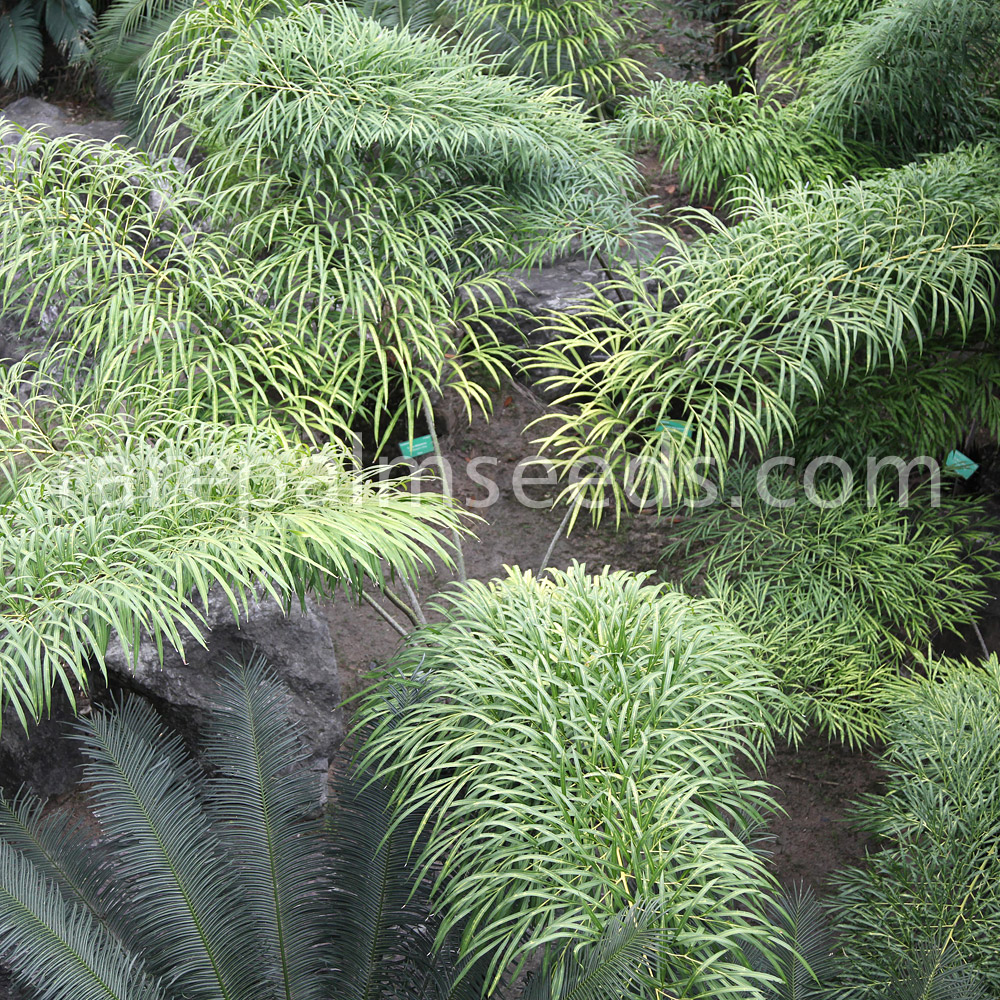n my opinion, this is one of the most desirable cycad species introduced in the past several decades. It was formally described in 1996. Native to China, it is a plant with a rather small caudex, typically under a foot in size, but with long leaves that stretch upwards and will divide to the third order. Some argue that it’s just “bi-pinnate”, but if you research pictures of the leaves, there is a small stem leading to two or three leaflets. Therefore, I consider it to be “tri-pinnate”. In other words, the main stem will fork and that branch will fork again, this last stem holding the leaflets.. The Caryota palm divides to the second order and is considered to be multipinate as well. With this branching, this species produces a very tropical and exotic appearing leaf.
It typically will hold two to four leaves, but has been reported to hold as many as ten leaves. Length of these can reach ten feet. Compared to other cycads, this is a small to medium size mature plant. The leaves tend to go straight upwards, flexing down over time. Cycas debaoensis prefers filtered light and is cold hardy to the lower 20’s F. It is extremely difficult to find, let alone in coning size. Our cycads are domestically produced and definitely the real thing. I’ve shown other plants of this species before, but such a beautiful plant cannot be shown too many times. At nurseries, this is considered super rare and is always hard to find. The plant on special is in a 15g pot with a caudex of 6 inches. It is known to be a female. The 11th photo is c/o TS at RPS.
 |
- TILLANDSIA CLUSTERS MANY AIRPLANTS IN ONE BUNCH – LARGE CLUSTERS - July 23, 2024
- HELICONIA SCHIEDIANA BANANA-LIKE SUCKERING TROPICAL PLANT - July 23, 2024
- ALOCASIA SUMO AN EXOTIC ELEPHANT EAR WITH SOME COLD HARDINESS - July 23, 2024












